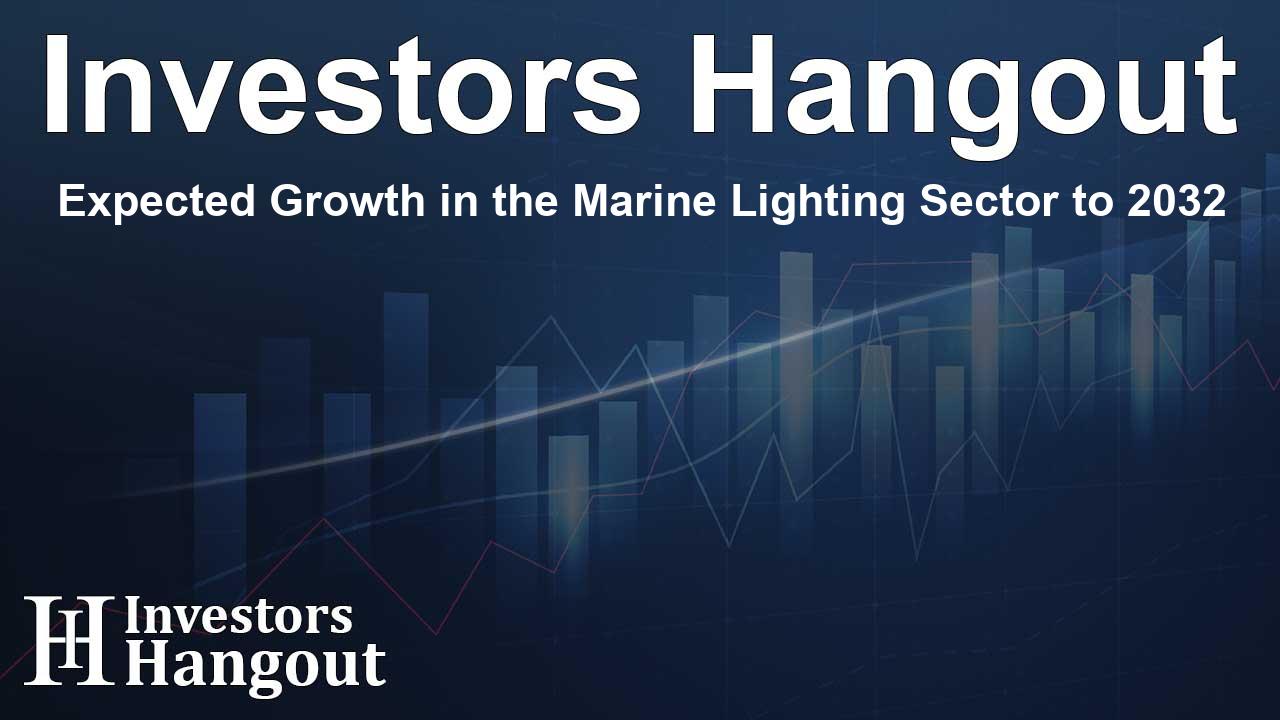Expected Growth in the Marine Lighting Sector to 2032

Insights into the Marine Lighting Market
The global marine lighting market is gaining momentum, with the current valuation at USD 364.37 million projected to grow significantly. By the year 2032, this sector is anticipated to surpass USD 542.73 million, achieving a compound annual growth rate (CAGR) of approximately 5.19%. Such growth can be attributed to a variety of factors, particularly within the luxury boating and marine tourism industries.
Factors Fueling Demand in Marine Lighting
One of the primary drivers of growth in the marine lighting market is the surge in marine tourism and recreational boating. Enthusiasts today seek high-quality, energy-efficient lighting that enhances the atmosphere on yachts, cruise ships, and recreational vessels. Increased engagement in luxury marine experiences is leading to heightened investment in sophisticated lighting solutions, ensuring safety and ambiance. Additionally, innovative designs in decorative and underwater lighting are being adopted, meeting aesthetic demands while adhering to sustainability goals.
Sustainability in Marine Lighting
As the leisure boating sector continues to electrify, demand for advanced lighting systems is rising in tandem. Recent figures show a noteworthy increase in luxury yacht sales, reflecting the broader trend of integrating cutting-edge lighting technologies into marine installations. With maintaining a stunning visual appeal alongside reducing energy consumption becoming crucial, companies are rising to the challenge, specializing in creating high-grade lighting options crafted for marine environments.
Player Dynamics within the Market
Several leading companies play pivotal roles in shaping the marine lighting sector. Notable market players include HELLA Marine, Lopolight, OSRAM GmbH, and Perko Inc., among others. These initiatives focus on delivering advanced lighting solutions tailored to meet the distinct needs of the marine industry. Keeping abreast of competitive advancements, these companies strive to enhance and diversify their product offerings continually.
Segmentation and Insights from the Market
In terms of application segments, the industrial marine segment is currently the largest within the marine lighting market, boasting a revenue share of approximately 36.02%. This demand stems from commercial vessels and offshore platforms that necessitate robust, energy-efficient lighting solutions. The leisure marine segment is expected to experience the highest CAGR, projected at 6.22% from 2025 to 2032, primarily driven by a growing interest in boating and yachting activities.
Regional Trends Highlighted in the Market
Geographically, North America holds a significant share, accounting for about 40.86% of the marine lighting market. The region benefits from a well-developed shipbuilding industry and a culture of recreational boating. Ongoing enhancements in safety regulations and modernization efforts further drive demand for high-performance lighting solutions.
In contrast, rapid growth is anticipated in the Asia Pacific region, expected to experience a CAGR of around 6.45% through 2032. This growth is chiefly due to surging shipbuilding activities, investment in marine infrastructure, and the expansion of marine tourism across countries like China, Japan, and South Korea. Europe also reflects opportunities for market growth, with increasing investments in energy-efficient lighting solutions noteworthy for cruise tourism and port upgrades.
Conclusion and Future Outlook
The future of the marine lighting sector seems promising, buoyed by a blend of technological advancement and increasing consumer interest in upscale marine experiences. As more people engage in leisure boating and marine tourism, the continuous evolution of lighting systems will provide cutting-edge solutions, ensuring both safety and aesthetic appeal in the marine environment. Companies within this industry are dedicating resources to meet the demands of a dynamic market, ensuring they remain competitive and innovative as consumer preferences shift toward sustainability and energy efficiency.
Frequently Asked Questions
What is the projected size of the marine lighting market by 2032?
The marine lighting market is expected to surpass USD 542.73 million by the year 2032.
Which factors are driving the growth of marine lighting?
Increased marine tourism, luxury boating, and demand for energy-efficient lighting solutions are key drivers of market growth.
Who are the leading players in the marine lighting industry?
Key companies include HELLA Marine, Lopolight, OSRAM GmbH, Perko Inc., and others who specialize in marine lighting solutions.
What are the primary applications for marine lighting?
Marine lighting is mainly segmented by application into industrial marine, leisure marine, and military marine sectors.
Which region currently dominates the marine lighting market?
North America leads the marine lighting market, holding a significant share due to a well-established shipbuilding sector and boating culture.
About The Author
Contact Owen Jenkins privately here. Or send an email with ATTN: Owen Jenkins as the subject to contact@investorshangout.com.
About Investors Hangout
Investors Hangout is a leading online stock forum for financial discussion and learning, offering a wide range of free tools and resources. It draws in traders of all levels, who exchange market knowledge, investigate trading tactics, and keep an eye on industry developments in real time. Featuring financial articles, stock message boards, quotes, charts, company profiles, and live news updates. Through cooperative learning and a wealth of informational resources, it helps users from novices creating their first portfolios to experts honing their techniques. Join Investors Hangout today: https://investorshangout.com/
The content of this article is based on factual, publicly available information and does not represent legal, financial, or investment advice. Investors Hangout does not offer financial advice, and the author is not a licensed financial advisor. Consult a qualified advisor before making any financial or investment decisions based on this article. This article should not be considered advice to purchase, sell, or hold any securities or other investments. If any of the material provided here is inaccurate, please contact us for corrections.
